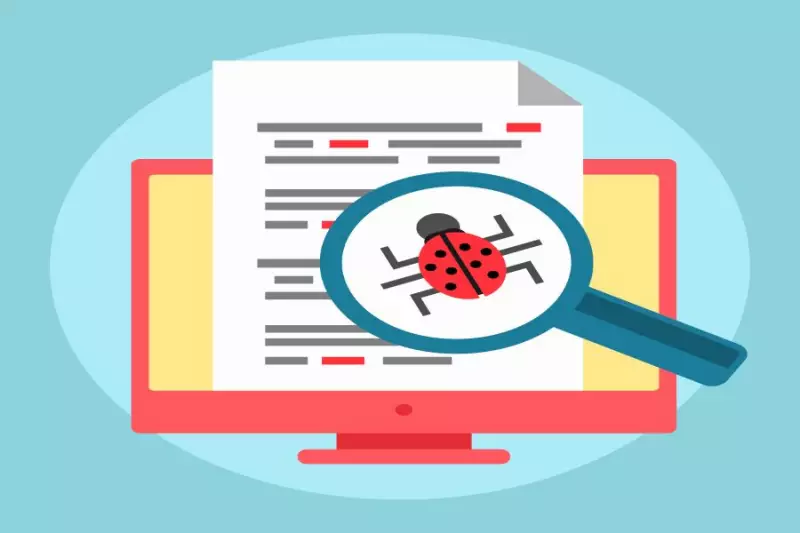What is Website Spoofing & How Can I Prevent It?
Table of Contents
- By David Lukic
- Published: Feb 23, 2021
- Last Updated: Mar 18, 2022
Cybercriminals use so many techniques; it sometimes feels like it is hard to keep up. One of these cybercrime tactics is called website spoofing, and you need to know all about it to stay safe from this malicious practice.
What is Website Spoofing?

Website spoofing is when someone sets up a malicious website and makes it look like a legitimate one. The culprits may also use a URL that is very close to the original to trick visitors into thinking they are visiting the right site.
The scammer hopes to get people to believe that the website belongs to the impersonated company or individual. They will often duplicate an existing, legitimate site, copying artwork, layouts, fonts, colors, and other details to make it look as convincing as possible. They may lure victims in using phishing emails.
What is Website Spoofing About
Some website spoofing is for the purposes of a hoax, but the majority is to defraud victims and steal personal, sensitive information for purposes of theft or identity theft. Spoofing websites may be used in denial-of-service (DDoS) or man-in-the middle attacks.
Another reason why someone might spoof a website is to parody or make fun of an organization. An example would be two websites www.msfirefox.com and www.msfirefox.net, that jokingly claimed that Microsoft had purchased Firefox and was releasing a new product. None of this was true, and the websites were intended as a joke.
Some fake (spoofing) websites are built to spread fake news to sway opinion and attention.
However, most are intended for the purpose of theft. They may impersonate a login screen where the user enters their login credentials, which are then compromised. In other cases, the user may have to enter credit card numbers or bank details, and then their money is stolen. Sometimes these sites are set up as a tool to infect computers and devices with malware for the intent of spying, ransomware, or additional fraud.
What are the Types of Spoofing?

Along with website spoofing, there are also various other types of spoofing scams you should be aware of so you can steer clear. The word "spoof" simply means to impersonate someone or something that you are not. It is essentially pretending to be a legitimate resource when it is entirely fake.
Some of the most common types of spoofing are:
● Email spoofing - Email spoofing is when someone sends you an email from an address that looks like a legitimate sender, but it's fake. It can be accomplished pretty easily and is often used for phishing attacks.
● Caller ID spoofing - Everyone has gotten calls from a phone number that looks like it comes from a trusted source only to answer the call and find out it is a telemarketer or scammer who is trying to trick you.
● GPS spoofing - Hiding someone's physical location is called GPS spoofing. Using a VPN on your network will do that too. It may look like you are located in a different location than you actually are.
● IP or DNS spoofing - VPNs will also change your IP address, which may be called IP spoofing. When hackers do it, they do so to not get caught.
● URL or domain name spoofing - Another technique cybercriminals use is masking their URL or domain name and pretending to be something other than the actual object to trick visitors into trusting them. This practice may be called social engineering.
● Website spoofing - Someone copies and pretends to be a legitimate website that is fake and usually intended for some nefarious purpose.
● Text message spoofing - You receive text messages that appear to come from a friend or associate with a link you are supposed to click. Those could be fake and spoofed to look real.
● Social Media ads spoofing - Often, scammers will post fake ads on social media pretending to be popular brands. Those, too, are examples of spoofing.
Website Spoofing vs. Email Spoofing
Website spoofing and email spoofing are similar and may often be linked. For example, say you receive an email that appears to have come from your bank. The email address looks legitimate; the email body has your bank's logo, the colors, and footer information. It all looks real. However, the message alerts you that something is wrong with your account, and you must click the link in the email immediately, log on, and fix it. Panicked; you do just that. Now you have been spoofed and may end up being the victim of fraud.
In reality, that email was part of a phishing campaign designed to scare you and get you to click a fraudulent link. The link took you to a spoofed website that looked like your bank's website, so you logged on. However, you actually entered your login details into a scammer’s website, and now they have the keys to your bank account. Before they drain all your funds, you have to take quick action. Additionally, the website may have contained malware such as ransomware infecting your computer for even more damage later.
How to Detect and Stop Website Spoofing
Thankfully, even though spoofed sites are pretty common, there are ways to avoid them so you don’t become a victim.
Some cybersecurity methods to protect yourself against spoofing attacks or other kinds of fraud are:
● Keep an eye out for poor grammar, misspellings, and incorrect capitalization or punctuation. A lot of these cyberattacks come from non-native speaking countries.
● If you receive an email that looks like it comes from a trusted source, review the "sender" of the email to be sure.
● Never click a link in an email; always go to the web and enter the URL yourself. Do not download attachments.
● Check for an SSL certificate in the URL before entering any login credentials or personal information.
● Watch out for urgent language claiming there is a problem. Scammers use scare tactics often to get you to act without thinking.
● Turn on spam filtering on your device.
● Sign up for two-factor authentication with all your financial accounts so no one can log on without your mobile device.
● Keep all your devices updated with the latest security patches and operating system.
● Keep strong antivirus/anti-malware protection running at all times. These programs can prevent you from visiting insecure websites or clicking malicious links.
● Never give out personal information to anyone you don't know.
















